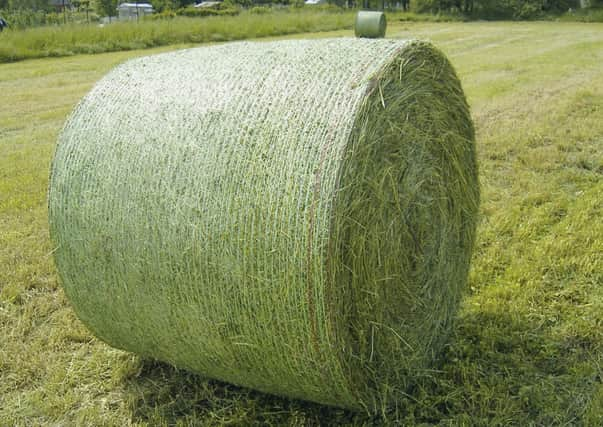Keeping your eye on the bale


Ken Stroud, Volac NI silage specialist, has some suggestions.
Look at the grass
“Don’t make bales from ‘older’ grass just because you’ve always done it that way. Bales are “mini clamps”. So why not cut grass younger? Obviously chop length needs to be longer for bales.”


Consider wilting to 30-35 % DM for dairy
Advertisement
Advertisement
“Although the optimum % DM for bales may vary for dairy, beef and sheep, avoiding over-wilting is important for any livestock in order to capture maximum nutrient value,” says Ken. “Some farmers can achieve these lower % DMs within 24 hours. If you’re making silage drier you have to wilt for longer, but you can’t guarantee the weather, especially this late summer.”
Utilise modern baling technology
Improved baling technology has vastly improved bale quality, says Ken, and is a key reason why many local farmers do such a good job.
“Modern balers that produce finished, tightly-wrapped bales in one machine, rather than requiring separate machines for netting and wrapping, reduce the chances of air getting into the bale.
“Remember, round bales have a large surface area for air to penetrate: the first three inches of silage near the surface around their circumference equates to a third of the bale’s total volume. Modern balers also produce denser bales.”
Use the appropriate additive
Advertisement
Advertisement
There is a big shortfall in the number of bales made with an additive, says Ken. Yet those farmers tightly focused on bale quality use additives much more routinely.
“Bales above 45% DM are more difficult to ferment and at greater risk of spoilage and heating. Therefore, look at an additive such as Double Action Ecobale that includes a bacterium effective at fermenting drier material, but which also includes a preservative against heating and spoilage.
“For bales at 33-45% DM, there can be more scope to tackle both heating and fermentation with an entirely bacterial inoculant. So I would suggest Ecocool, which contains two types of beneficial bacteria, one for each job.
“For bales below 33% DM with less risk of spoilage, consider using straight Ecosyl. At this sort of lower % DM and by treating this way, you maximise the chance of a good fermentation,” he adds.
Respect bales
Advertisement
Advertisement
Although stronger, denser bales aid stacking, it is still important not to stack bales too high in order to avoid damage, especially if made at lower % DMs. “Also make sure bales are stacked in a stable manner, and on level ground. Personally, I like to see round bales stacked on their ends. They don’t seem to squash as much,” Ken added.
Bales for beef and sheep
Slower consumption of higher % DM bales on beef and sheep enterprises, compared with dairy, makes them much more susceptible to spoilage and heating, due to being exposed to air for longer at feed-out. Consequently, an additive that preserves against these issues as well as improving fermentation becomes all the more important.
“The other issue is listeria. You need a pH below 4.8 to kill listeria, but that is difficult with drier bales. Also, the activity of spoilage organisms once exposed to air will result in the pH rising – again allowing listeria to grow. This all underlines the importance of a combined bacterial and preservative additive such as Double Action Ecobale in higher % DM bales,” noted Ken Stroud, mobile 07713 197084.
Volac Ecosyl additives are distributed in NI by John Thompson & Son Ltd on (028) 9035 1321. Browse www.cuttoclamp.com for details.